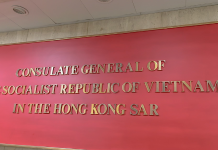Chan, who is an assistant professor at Lingnan University’s Department of Chinese, says simplified Chinese has “zero value” in Hong Kong. Chan adds the only exceptions are in the boundary areas between Hong Kong and China where there are large numbers of mainland Chinese commuters travelling in and out of Hong Kong.
What is more, he argues that mainlanders can often decipher the meanings of traditional signs since simplifed Chinese characters are derived from traditional Chinese ones. Besides, just under a quarter of Chinese characters are actually simplified; most still bear their traditional form.
Chan blames the government for failing to act to sustain Hong Kong’s traditions and values. He predicts that if people continue to turn a blind eye to changes in the writing system, simplified Chinese will soon replace traditional Chinese in Hong Kong.
The furore over the simplified Chinese road signs illustrates Hong Kongers’ anxieties over the territory’s autonomy and cultural identity. But aside from the cultural and political significance of traditional characters, its defenders also emphasise there are other values that make them worth preserving.
Chan Chi-hung, a language instructor in the Chinese Department at the University of Hong Kong, is sceptical about the hullaballoo surrounding the debate about traditional and simplified characters. He says the discussion has become too emotional.
“When you ask Hong Kong people, which characters do you prefer, traditional or simplified? Many students would say they prefer the former. Yet from my daily observations as an examination marker, I realise a lot of students actually write simplified Chinese unconsciously when they need to be fast,” Chan says.
For Chan, the value of traditional characters lie in the characters themselves. He supports the use of traditional characters because of his passion for Chinese culture and literature.
For instance, Chan believes it is better to study the Chinese classics in traditional characters because simplified Chinese fails to distinguish between certain homonyms.
Take the character “hou”, which in simplified Chinese means both “back” and “queen”. In traditional Chinese, these are two different characters. In simplified Chinese, the complicated character is replaced with a single simplified form which creates confusion especially when reading Chinese classics.
In most Chinese classics which are written in the traditional script, monosyllable words (zi) are used instead of polysyllable words (cihui). Hence knowing the exact meaning of each specific traditional Chinese character is crucial to comprehending the meaning of the entire sentence.






































